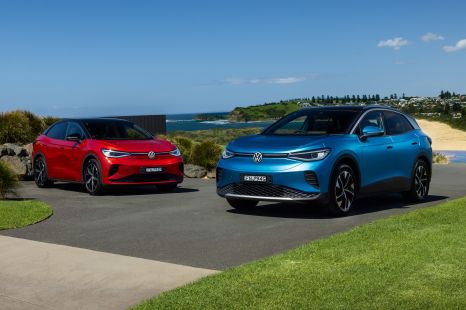

Damion Smy
Australian new-car buyers sitting on the fence when it comes to EVs, says VW
10 Minutes Ago
Ford says it created the electric F-150 Lightning to give buyers another option beyond petrol and hybrid models – it's a compelling package.



News Editor

News Editor


News Editor

News Editor
Where expert car reviews meet expert car buying – CarExpert gives you trusted advice, personalised service and real savings on your next new car.
The Ford F-150 Lightning has managed to beat rivals from Chevrolet, Ram and Tesla to market, and yet there’s nothing half-baked about this electric pickup truck.
Ford is quick to remind people its F-Series pickup has been the best-selling vehicle in the US for 40 years.
Suffice it to say, the Blue Oval brand knows pickup trucks. It listens to customer feedback and gives customers an extraordinary amount of variety.
Even setting aside the burlier Super Duty family of F-Series trucks, the F-150 range consists of a range of turbocharged, naturally-aspirated and hybrid V6 engines plus a V8, multiple body styles and tub lengths, and a bevy of variants including the wild Raptor and even wilder Raptor R.
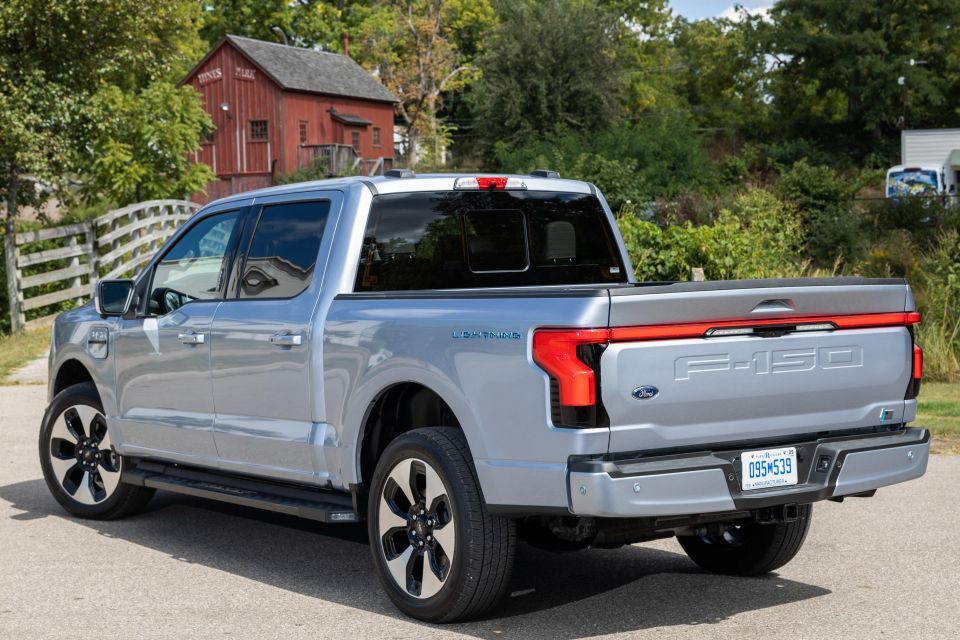
While Ford has been making pickup trucks since before most of us were born, its work in the electric vehicle space has been much more limited.
It leased Ranger EVs to American customers in the late 1990s and early 2000s, then introduced a Focus Electric around a decade later that was little more than a compliance car.
Now, it’s in the midst of a rollout of electric vehicles. While crosstown rivals General Motors and Stellantis have committed to a bevy of vehicles across multiple segments and multiple brands, Ford has arguably had more of a laser focus with its F-150 Lightning, E-Transit, E-Transit Custom and Mustang Mach-E leading the charge.
It’s primarily on these four pillars that Ford is setting its aspiration to have EVs account for 50 per cent of its global sales volume by 2030.
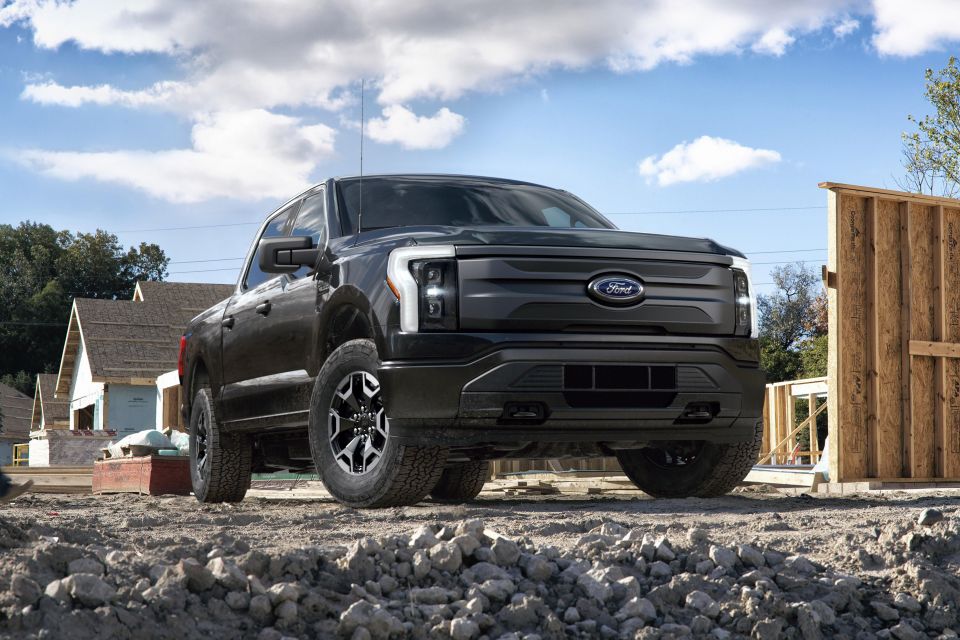
The F-150 was Ford’s best-selling vehicle globally last year, so an electric version was a natural extension of the range.
Ford says one out of two Lightning customers are new to pickup trucks, two out of three are new to Ford, and three out of four are new to electric vehicles, creating perhaps the most diverse buyer set of any F-150 variant.
While it appears to successfully be attracting new F-150 owners to the Lightning, Ford has been careful not to alienate rusted-on F-150 buyers.
To that end, it features essentially the same exterior and interior design, though underneath there’s a unique frame. Ford says it has used parts from combustion-powered F-150s “where it wouldn’t make a difference”.
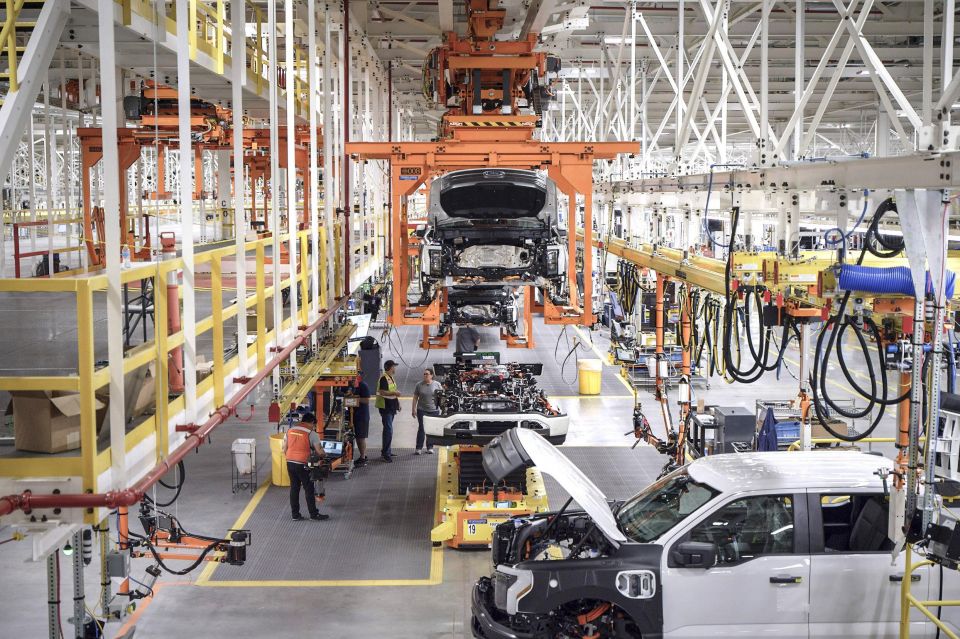
That’s a different strategy to arch-rival General Motors, whose Chevrolet Silverado EV, GMC Hummer EV and, almost certainly, the upcoming GMC Sierra EV, feature not only unique underpinnings but also completely different bodies to their combustion-powered showroom-mates.
It’s produced at the Rouge plant outside of Detroit, one of two F-150 factories, which has produced Ford vehicles since the Model A. At Rouge, body shells roll into either the main factory for combustion-powered vehicles, or into a new, dedicated facility on the grounds for the Lightning.
It has a current annual production capacity of 60,000 units, but the plant is expanding and is on target to increase this to 150,000 units by mid-next year. Considering Ford had recorded around 200,000 reservations for the Lightning, there’s likely to be plenty of unmet demand for quite some time.
Consequently, we don’t expect to see the Lightning any time soon in Australia, though Ford says it is open to expanding the F-150 line-up beyond the two variants it’ll launch with here next year in locally remanufactured guise.
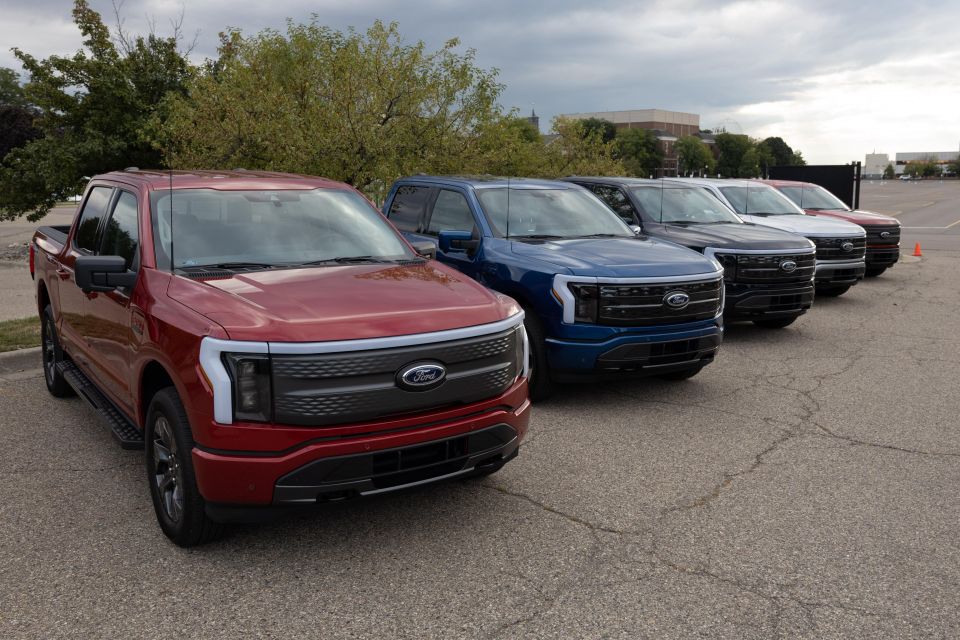
While it doesn’t have quite as many permutations as the petrol F-150 range, there’s still a wide variety of Lightnings on offer.
Available exclusively with dual-motor all-wheel drive, a dual-cab (‘Supercrew’) body style and a 5.5-foot tub, the Lightning is offered in Pro, XLT, Lariat and Platinum trim levels.
The 2023 range opens at US$46,974 ($72,636) – excluding on-road costs and any government incentives – for the base Pro with the standard-range battery, and tops out at US$96,874 ($149,797) before on-roads for the Platinum which comes only with the extended-range battery.
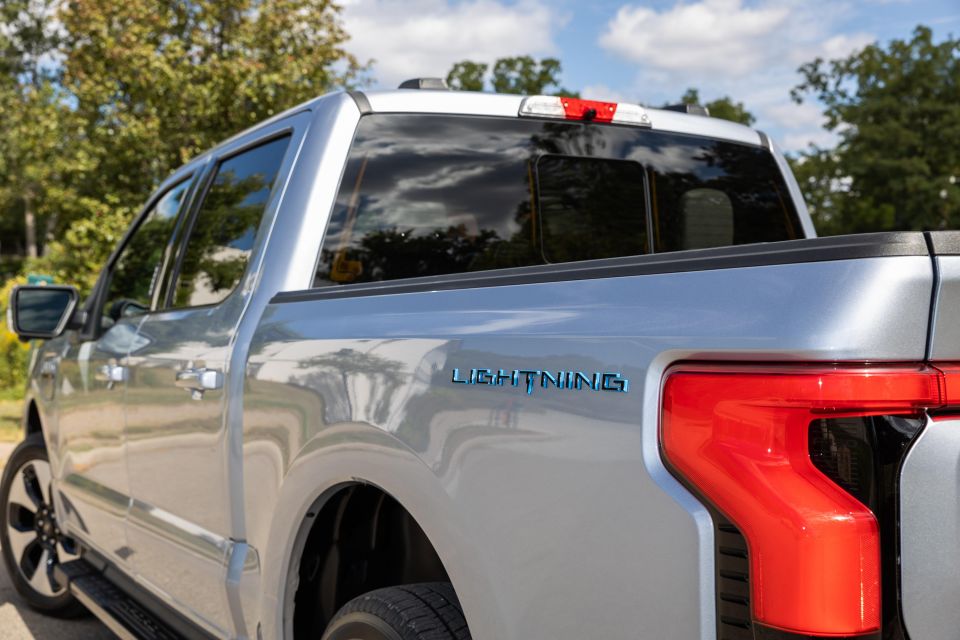
For context, an F-150 XL SuperCrew starts at US$43,450 ($67,187) before on-roads with four-wheel drive and the base 3.3-litre V6, while a Platinum V8 4×4 starts at US$66,895 ($103,440).
We tested the workhorse Pro with the extended-range battery, as well as some other boxes ticked like surround-view cameras, integrated trailer brake controller, towing package, LED puddle lights, and a spray-in tub liner.
Ford says around 60 per cent of the more fleet-focused Pro are sold with the standard range battery, while the rest of the Lightning range skews more towards the extended-range battery.
The company consulted with commercial customers, who said they have specific driving habits and didn’t want to pay for battery capacity they didn’t need. Ford says these customers were happy with around 200 miles (322km) of range, but Ford eked out more from the standard-range Lightning to account for those who tow or live in colder climates.
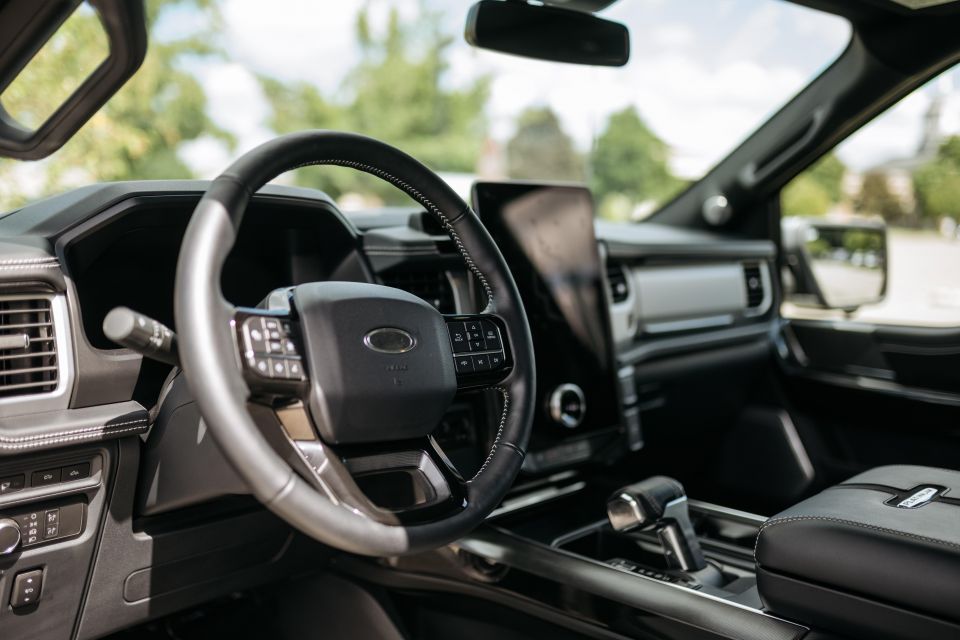
Buy your new car without the stress. It's fast, simple and completely free.

Great service from Travis and team, second time I have used this business would not hesitate to recommend them to anyone
Craig C.
Purchased a Ford Ranger in Sunshine Coast, QLD
CarExpert helped Craig save $7,224 on his Ford Ranger, now let us save you on your next new car.
Get your BEST priceIf you’ve sat in a current-generation, combustion-powered F-150, the Lightning’s interior will yield no surprises.
Even in fleet-friendly Pro guise, this is a nicely presented interior. Ford doesn’t mince words and try to call the seating surfaces leatherette or – groan – vegan leather, instead referring to the upholstery as vinyl. That’s some refreshing honesty.
Though many of us may associate the term vinyl with our families’ old Kingswoods, the material in the Pro is hardly objectionable and the seats are broad and comfortable.
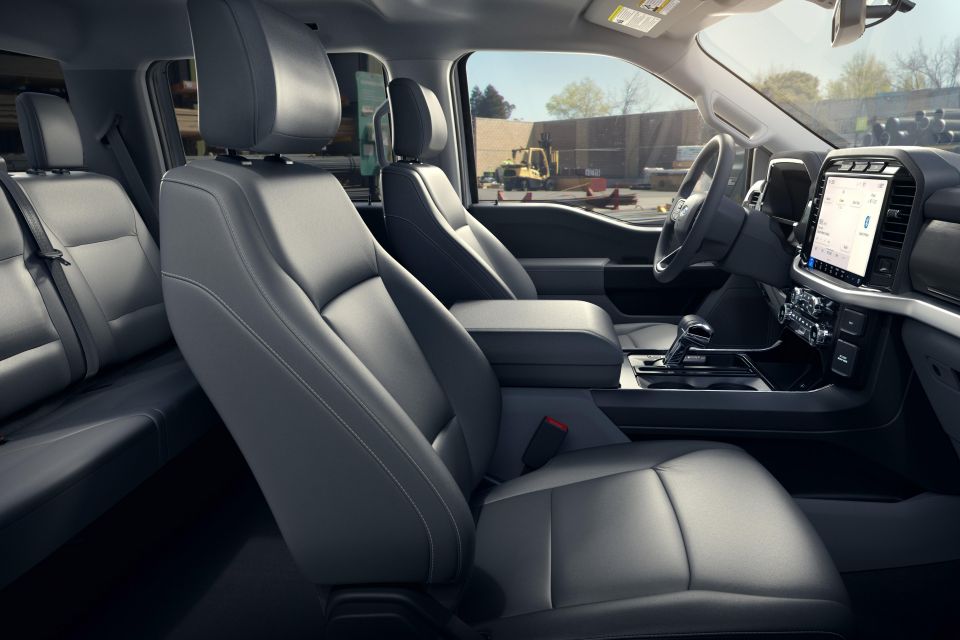
As you climb the Lightning ladder, you graduate to cloth, leather, and then finally the Nirvana leather of the flagship Platinum.
Ford has kept the same basic door design for the F-150 range for four generations now, with a prominent dip in the beltline on the front doors.
That further improves visibility in an already airy cabin, while the wide door trims allow you to quite comfortably rest your arm atop them.
There’s plenty of room in every dimension in both the front and rear of the cabin. It’s no surprise the F-150 became the best-selling vehicle in the US, as so many Americans use these not only as a workhorse but as a family vehicle.
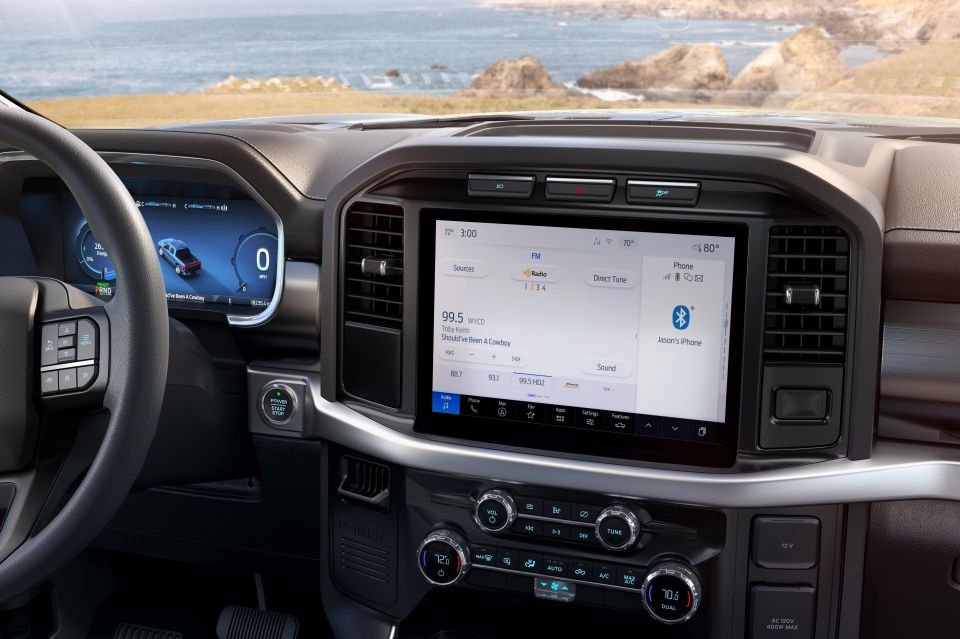

Depending on the variant there’s either a conventional 12-inch or portrait-style 15.5-inch touchscreen infotainment system, while all models have a 12-inch digital instrument cluster.
Each display boasts crisp, modern graphics, while the larger of the two touchscreens still features a conventional volume knob located within the screen’s perimeter.
The core F-150 range already has a raft of clever features, like a transmission shifter you can fold down and a work surface that folds down over the space.
The Lightning has even more clever features, like on-board scales that measure and display the weight of the payload on the centre touchscreen or on the FordPass app.
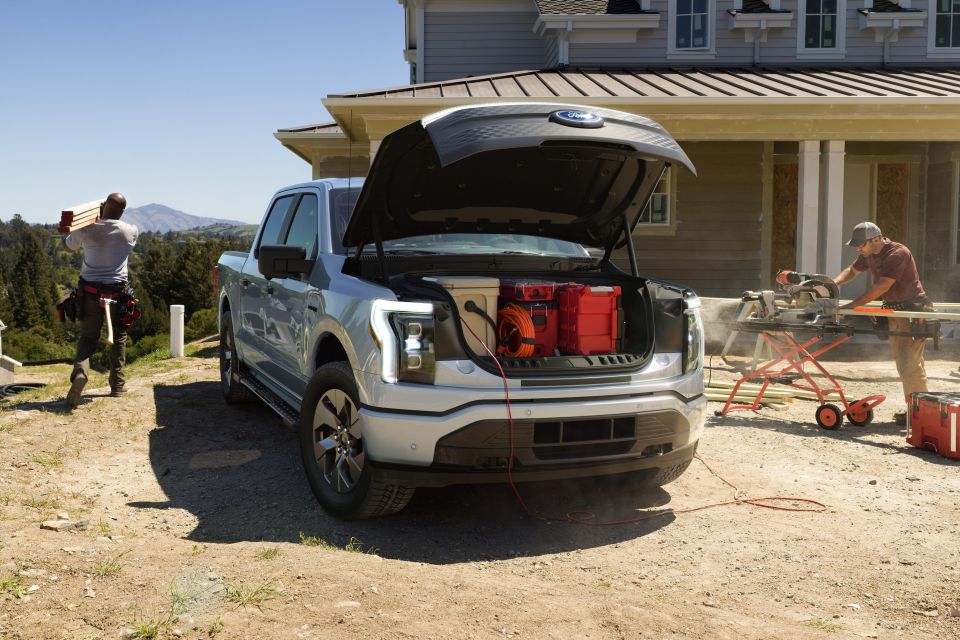
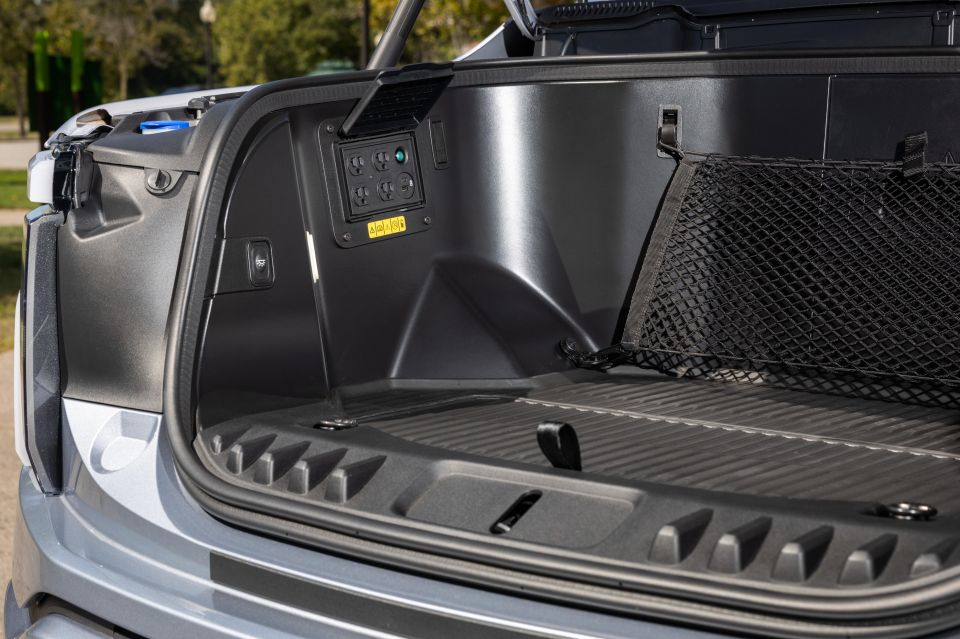
Perhaps the greatest feature of the Lightning is what Ford calls the Mega Power Frunk.
Where the engine would sit in a combustion-powered F-150, you’ll instead find a spacious 400L dry lockable storage area with a bevy of power outlets including USB outlets.
Indeed, the Lightning is abundant with outlets. Pro and XLT models come with Ford’s 2.4kW Pro Power Onboard setup with two 120V outlets in the cabin, two in the tub, and four in the frunk.
Optional on these variants and standard on the Lariat and Platinum is the 9.6kW Pro Power Onboard setup, which includes an additional two 120V outlets in the tub plus a 240V outlet back there. These variants also get a standard tailgate step.
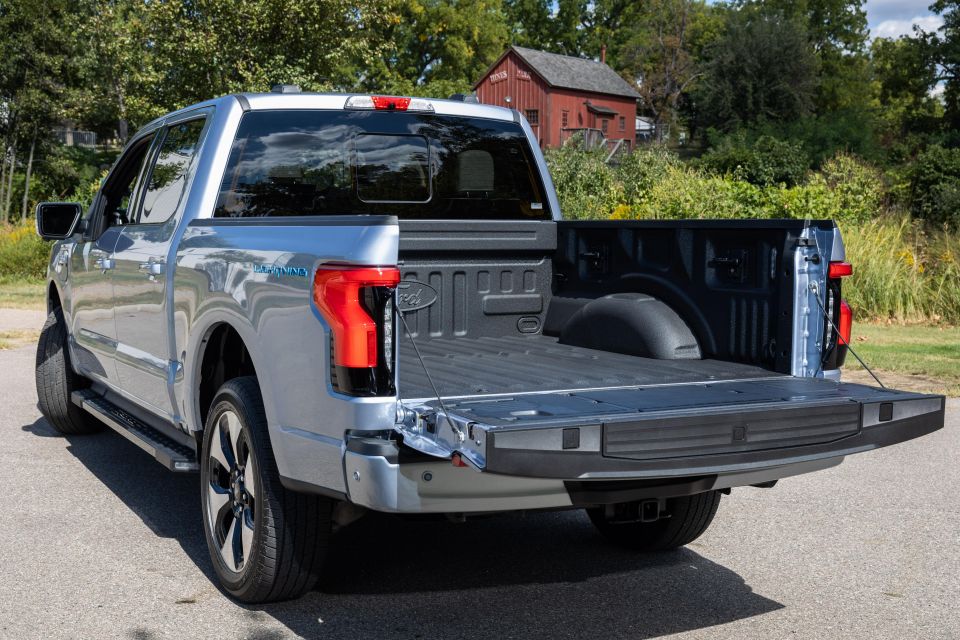
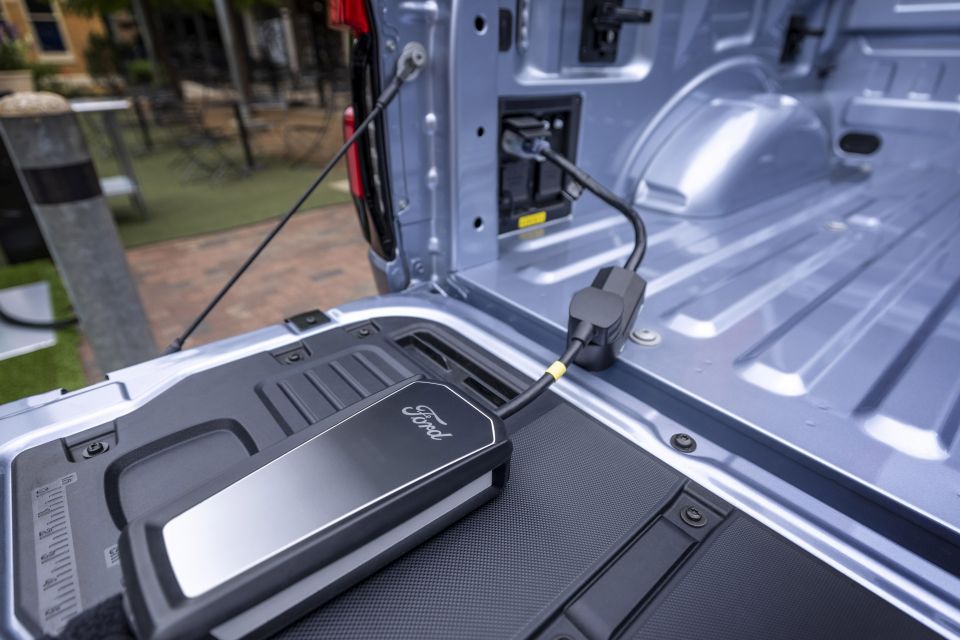
The Mega Power Frunk may have a silly name, but it has a multitude of use cases.
For example, the bonnet is so large you can use it for shade while you use devices or appliances you’ve plugged in. It also has a drain, so you can use it as one giant esky for a tailgate party.
Ford says it can fit two sets of golf clubs or three suitcases.
The only available tub measures 1704mm long, 1285mm between the wheel arches, and 543mm deep. Total volume is 1495L.
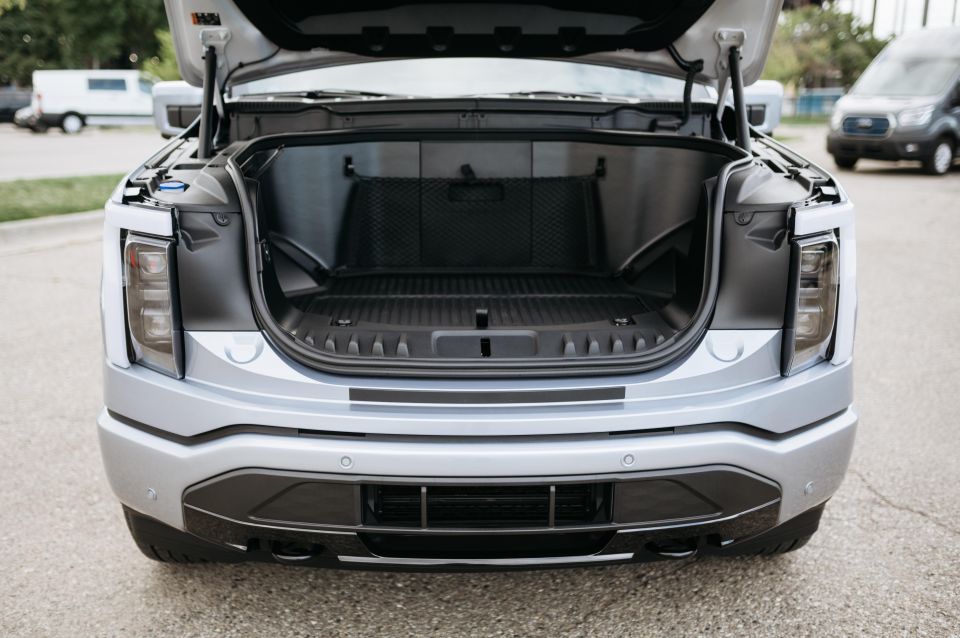
The F-150 Lightning is offered with a choice of a 98kWh standard-range or 131kWh extended-range lithium-ion batteries.
Standard-range models produce 337kW of power and 1050Nm of torque, while extended-range models see power bumped up to 433kW.
The Lightning is properly quick, too, with a 0-60mph (0-96km/h) time in the mid-four second range with the larger battery.
Ford made some running changes this year, bumping the range of vehicles with the standard-range battery from 370km to 386km on the stricter US EPA test cycle. The extended range continues to offer 515km, or 483km in Platinum trim.

Both batteries support DC charging at up to 150kW. 10 minutes on a 150kW charger can add 66km of range to a standard-range model or 87km to an extended-range model, with a 15-80 per cent charge taking 44 minutes or 41 minutes, respectively.
Ford says the F-150’s available V8 engine weighs around 363-408kg, while the battery pack of a Lightning weighs around 726kg.
With the standard-range battery, the Lightning has a payload of 1014kg. This drops to 885kg with the extended-range battery.
Towing capacity is 2268kg with the smaller battery and 3492kg with the larger one. Opting for the Max Trailer Tow Package bumps standard-range models’ towing capacity to 3492kg, the Platinum to 3855kg, and all other extended-range models to 4536kg.
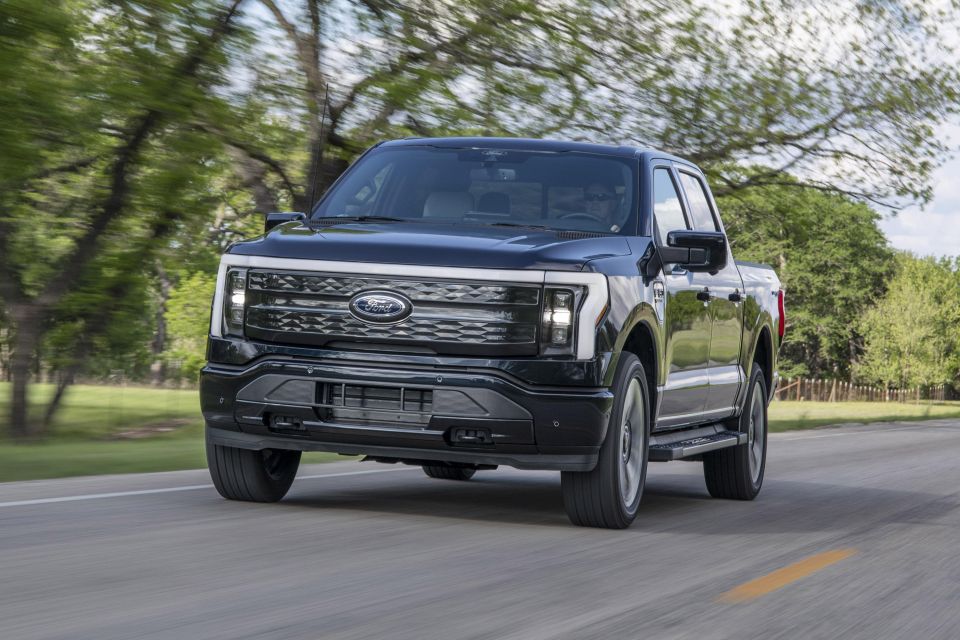
Where expert car reviews meet expert car buying – CarExpert gives you trusted advice, personalised service and real savings on your next new car.
While the Lightning may look like a regular F-150, this is no hastily conceived compliance car.
Ford says the underpinnings are comprehensively changed from the combustion-powered range, with a new frame and, in a first for the F-150, an independent rear suspension.
This set-up features semi trailing arms, coil springs, a stabiliser bar, and heavy-duty gas pressurised twin tube shocks.
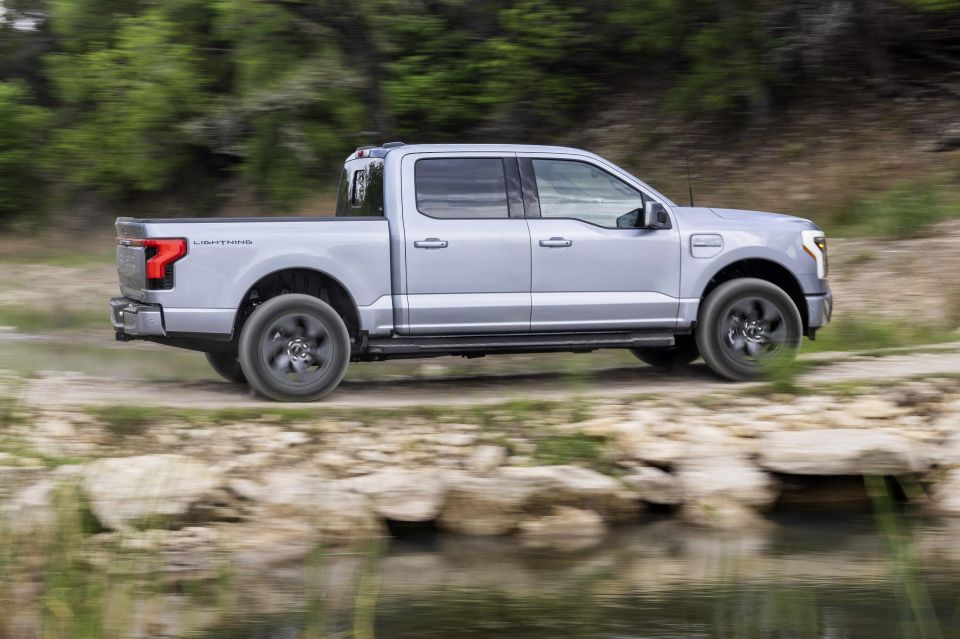
On our admittedly limited test drive, we were impressed with how smooth, quiet and composed the Lightning is. Though we didn’t take it on the highway, the cabin proved serene even at higher speeds and on rougher surfaces.
There’s a bit of the jiggling you may expect of a body-on-frame pickup truck, but it’s generally quite well composed with a comfortable, pliant ride.
There’s very little in the way of frame shake or untoward body movements, which is especially noteworthy as we were driving it unladen. Mind you, we were on some of the smoother roads of the Detroit metropolitan area, however these same roads managed to quickly expose the Mustang Mach-E’s rough ride.
This is a big, heavy pickup truck so there’s a bit of lean in corners, but it doesn’t feel overly awkward to drive thanks in part to well-weighted steering and a brake pedal that avoids feeling too wooden.
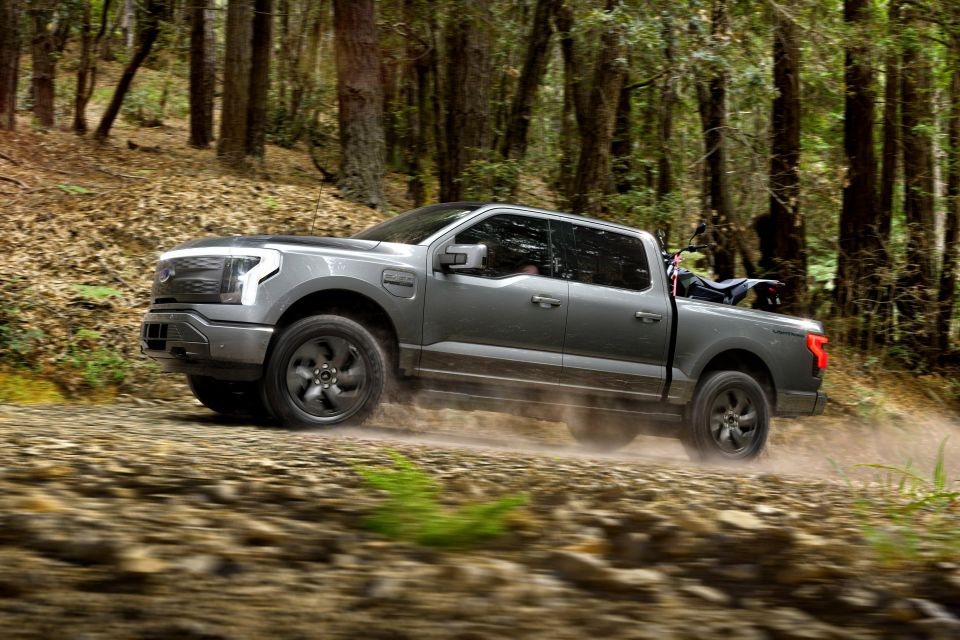
Where the Lightning differs most from its combustion-powered counterparts is in its power delivery.
Throttle tip-in is rather aggressive, which can make it a bit hard to take off cleanly, and you can find yourself chirping the front tyres quite easily.
The lane-keep assist can be a bit intrusive, nibbling away as the Lightning’s dimensions make it so adeptly fill a traffic lane.
More impressive is the one-pedal drive function, which can bring the vehicle to a complete stop.
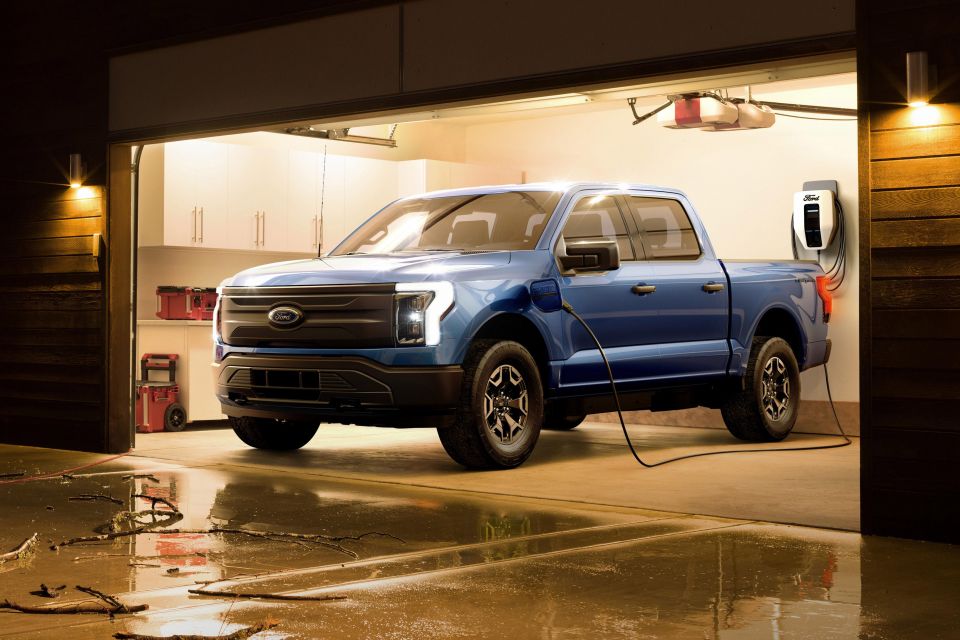

F-150 Lightning Pro:
F-150 Lightning XLT adds:
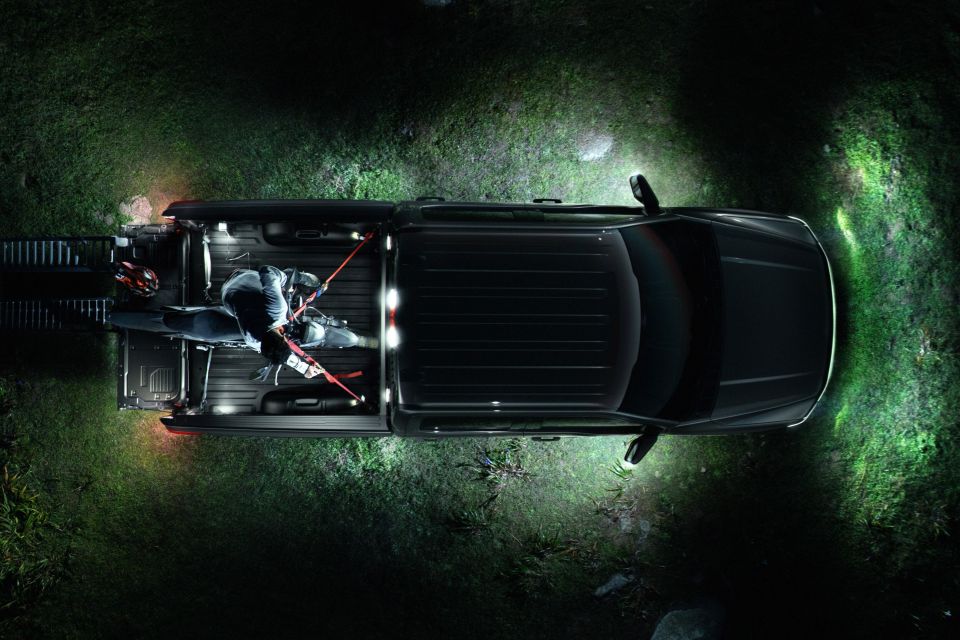
F-150 Lightning Lariat adds:
F-150 Lightning Platinum adds:
Standard on the Platinum and optional on lower variants is the Tow Technology Package, which includes trailer backup assist and reverse guidance, a trailer brake controller, and pro trailer hitch assist. A Max Trailer Tow Package includes additional cooling hardware for the battery and electric motors.
Ford also offers a feature called Intelligent Backup Power, which the company says can allow you to power your home for three days from an extended-range Lightning.
To do so, you need to have an 80-amp Ford Charge Station Pro installed, plus a home integration system hardwired to your home.
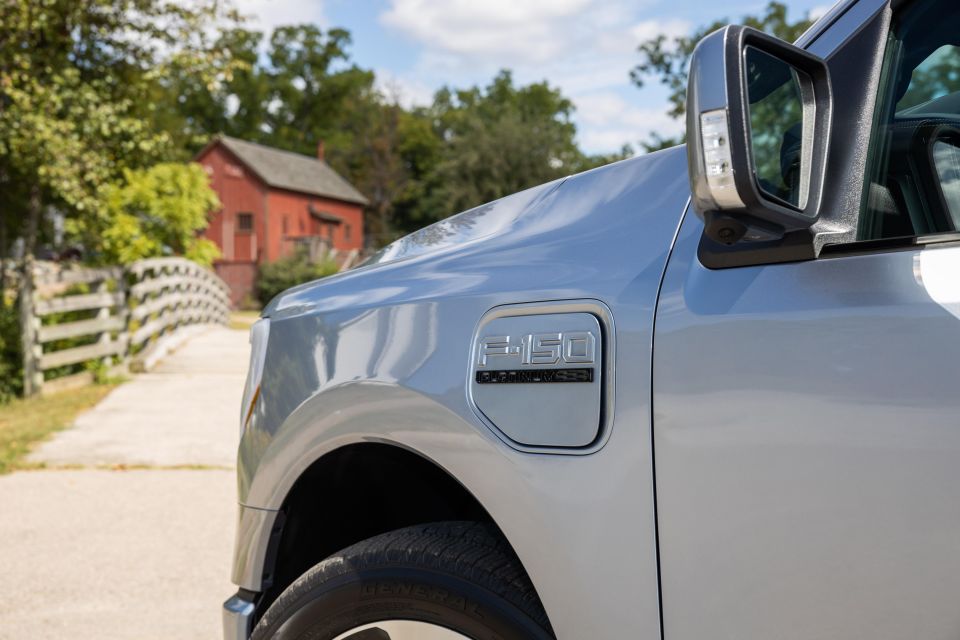
While the combustion-powered Ford F-150 was deemed a Top Safety Pick by the US Insurance Institute for Highway Safety, the Lightning has yet to be tested.
Standard safety equipment includes:
F-150 Lightning Lariat adds:
The Platinum also gets Ford’s BlueCruise, which supports hands-free driving on over 209,000km of highways.
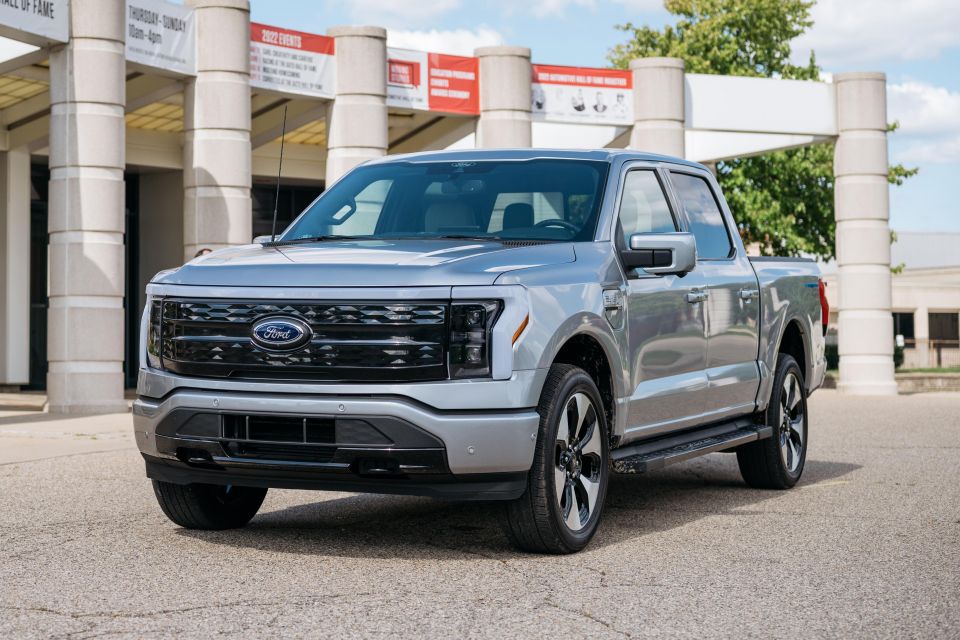
Ford knows pickup trucks, and it’s this knowledge that’s helped them make one thoroughly impressive electric vehicle.
It’s such a simple formula, too. It’s not a smaller, more premium model like a Rivian R1T, or an overwrought and oft-delayed polariser like the Tesla Cybertruck, while there’s a closer kinship between the Lightning and the regular F-150 than between GM’s new electric pickups and their combustion-powered counterparts.
By making it so comfortably familiar, the F-150 Lightning stands a better chance of coaxing owners of combustion-powered F-150s into the EV fold.
According to Ford, it’s already successfully doing that while also attracting people who don’t currently own Fords, EVs, or even pickups.
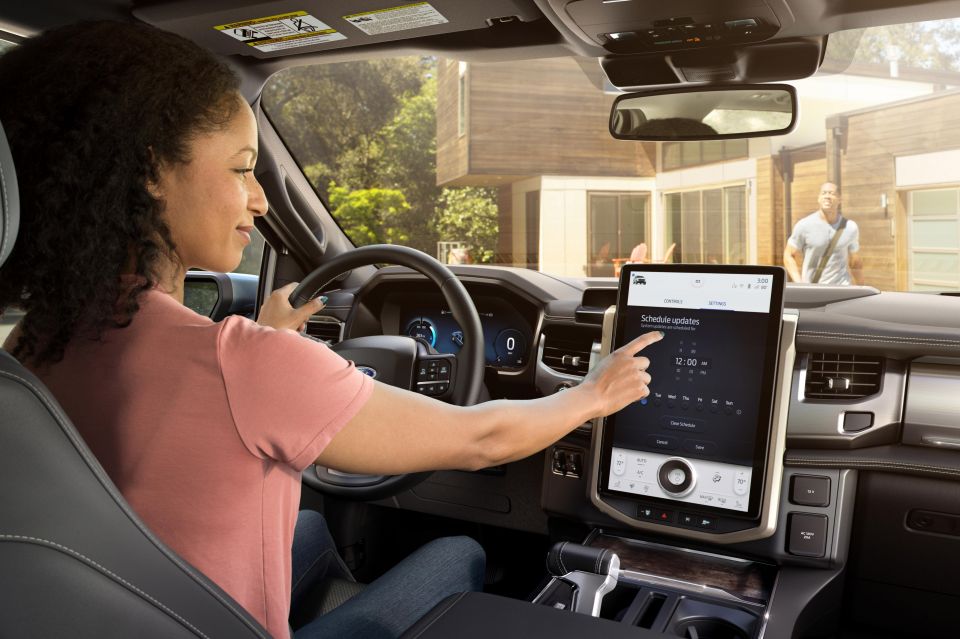
It’s not hard to see why, considering how many clever features there are available like V2L capability, that cavernous front storage area, zone lighting and built-in scales.
The F-150 Lightning also boasts a quiet, spacious and well-made cabin with slick technology, while there’s more than enough grunt to satisfy drivers.
There are inevitably limitations with electric pickup trucks. Though we didn’t get a chance to test its towing or load-hauling capability, we’re aware EV range often drops considerably doing so.
Our limited time behind the wheel revealed the F-150 Lightning to be a comfortable, capable electric pickup truck. Let’s hope Ford can get a better handle on supply and demand for the Lightning, because it would be one tantalising addition to the local line-up if Ford Australia can get its hands on it.
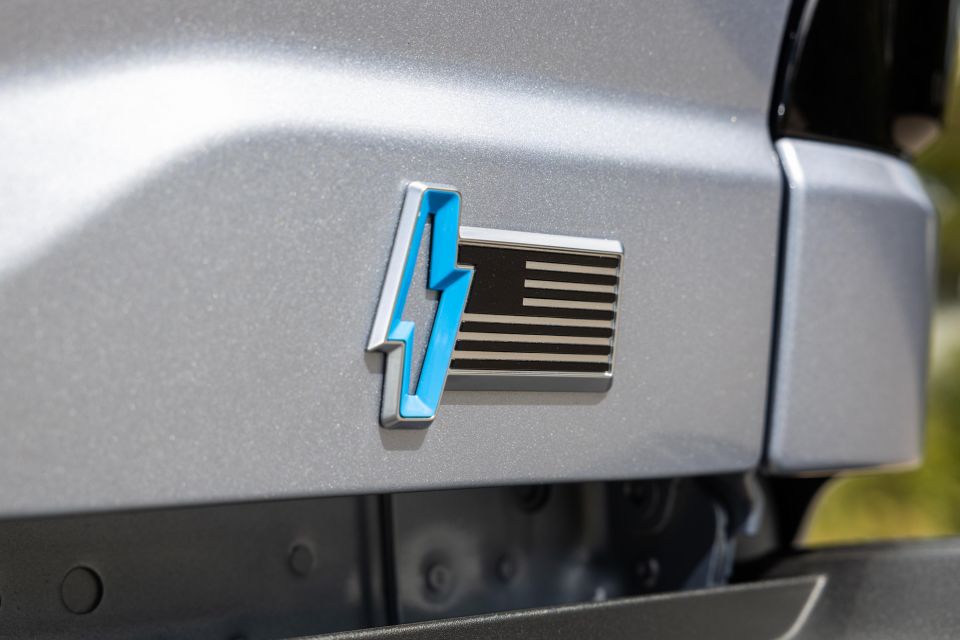
Click the images for the full gallery
MORE: Everything Ford F-150
Where expert car reviews meet expert car buying – CarExpert gives you trusted advice, personalised service and real savings on your next new car.
William Stopford is an automotive journalist with a passion for mainstream cars, automotive history and overseas auto markets.


Damion Smy
10 Minutes Ago
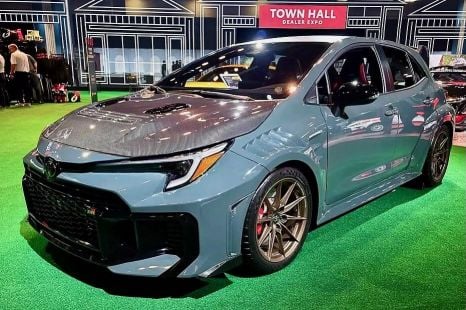

Ben Zachariah
29 Minutes Ago


CarExpert.com.au
30 Minutes Ago
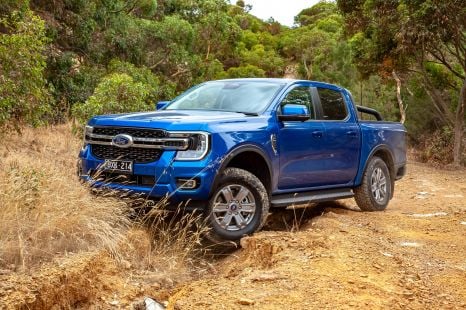

William Stopford
3 Hours Ago
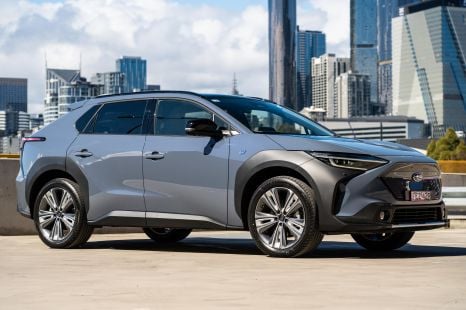

William Stopford
3 Hours Ago


Derek Fung
6 Hours Ago